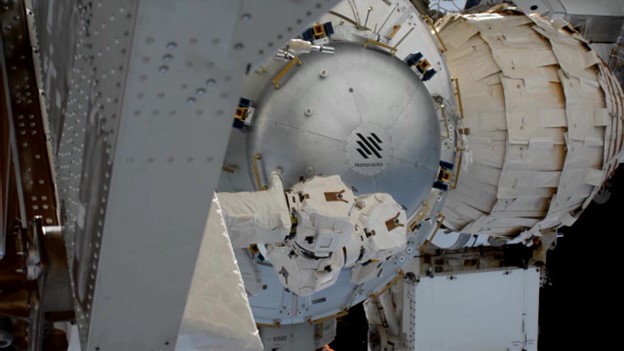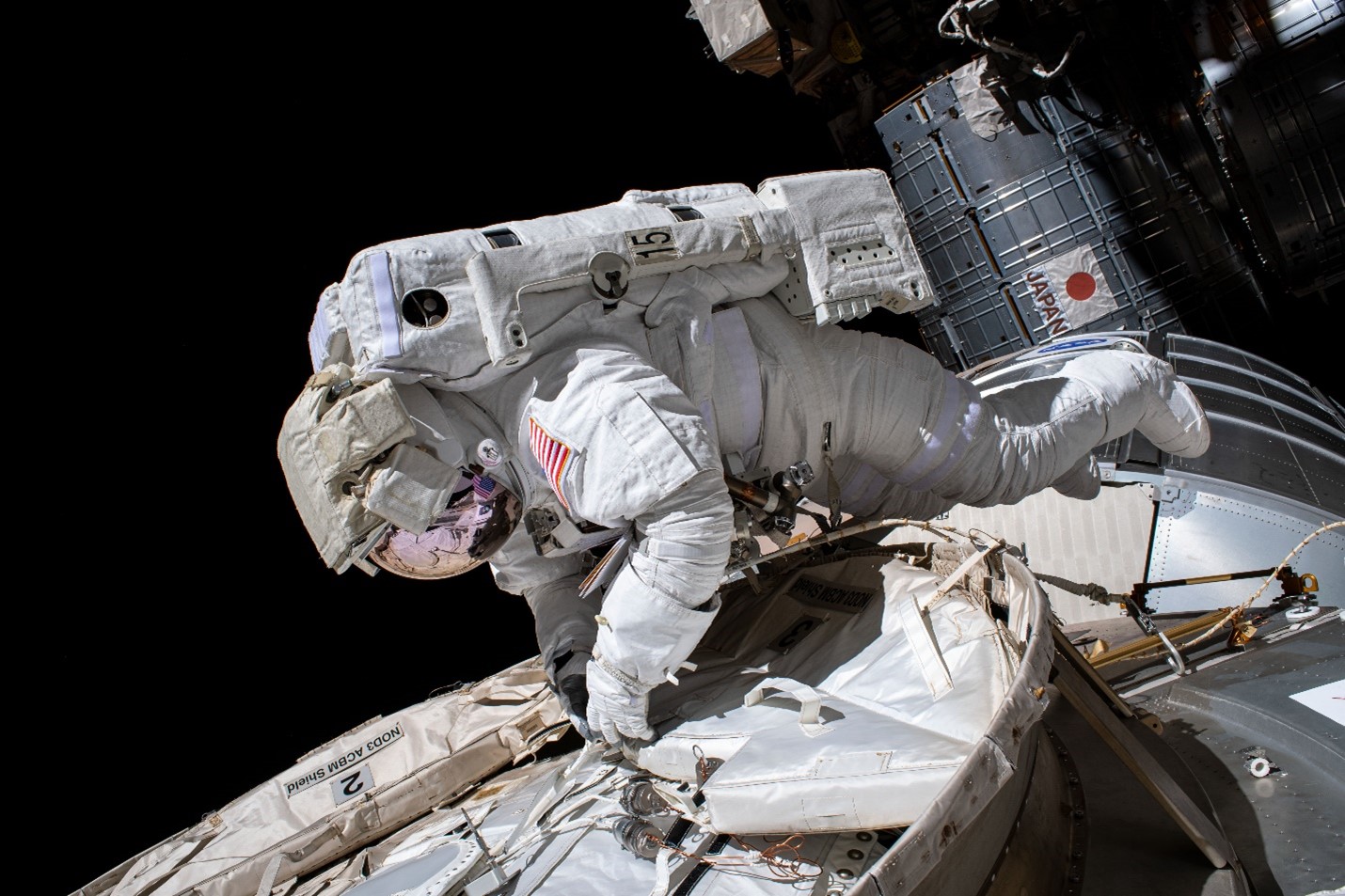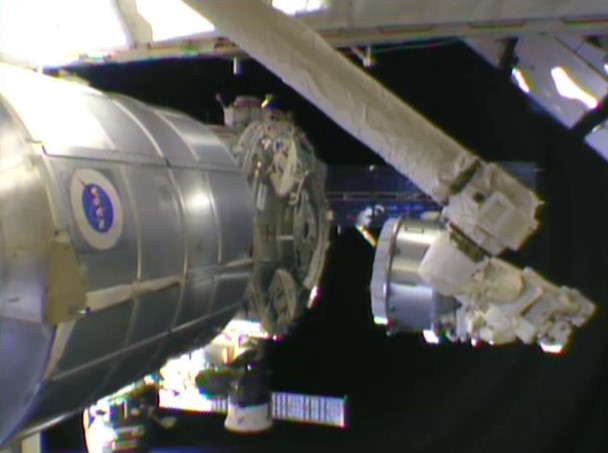Wi-Fi® on the International Space Station (ISS) is becoming more dynamic with the delivery of the Nanoracks Bishop Airlock
Figure 1: Nanoracks Bishop Airlock is berthed for the first time. Access point antennas provide port-side Wi-Fi coverage. Source: NASA
The Nanoracks Bishop Airlock (Bishop) is the first-ever commercially built, owned, and operated airlock on the ISS, and provides five times the existing payload volume currently available. The airlock expands the commercially offered services on the space station by introducing a new way to build and launch satellites, as well as a new way to robotically move large payloads and equipment between vacuum and atmosphere.
To perform these functions, the Bishop uploads a significant amount of Wi-Fi traffic when detached from the space station. When the Bishop is attached, it enhances the station’s exterior Wi-Fi infrastructure.
Figure 2: The Bishop is visible inside the unpressurized trunk of the SpaceX Dragon during rocket stage separation. Source: SpaceX
In July 2020, the unoccupied port on the Tranquility module—a space station module containing environmental control systems, life support systems, exercise equipment, and an observation cupola—was prepared specifically for the Bishop’s arrival during an extravehicular activity. Among their tasks, NASA astronauts Chris Cassidy and Bob Behnken disconnected and coiled a cable so that it would not break the Bishop’s vacuum-tight seal against Tranquility. This cable connected a pair of Wi-Fi antennas on Tranquility to a bulkhead, then to an access point (AP) inside the space station.
Figure 3: NASA astronaut Chris Cassidy disconnects Wi-Fi antennas on the Tranquility module, while preparing for Bishop’s arrival. Source: NASA
When the Bishop is berthed and pressurized, the crew can now connect that bulkhead to a pair of antennas mounted on Bishop to return the Wi-Fi AP to service, providing coverage on the port side of the space station. The Bishop’s Wi-Fi infrastructure antennas must be disconnected from the bulkhead prior to closing the hatch and extracting the air before unberthing Bishop.
Figure 4: With the Bishop Airlock berthed, the crew opens the hatch and connects a cable at J23 from a pair of antennas on the shell of the airlock to a Wi-Fi access point inside the Tranquility module. Before Bishop is robotically detached from its berth, astronauts will disconnect the cable and close the hatch. Source: NASA
When the Bishop is away from its berth, it uses a separate pair of Wi-Fi antennas to form an Ethernet bridge for a network of wired devices on-board the airlock. These devices include cameras, gateways, up to six payloads attached to the outside of the airlock, and payloads inside the airlock. The Bishop will be teleoperated from the ground, and Wi-Fi connectivity will enable the Bishop to support simultaneous activities that include launching research spacecraft called CubeSats, hosting earth-observing or sky-observing sensors, and performing microgravity, or pure vacuum research.
Figure 5: The Canadarm berths the Bishop Airlock for the first time. The Bishop will connect as a client of the space station Wi-Fi when not berthed. Source: NASA
As the 17-meter robotic arm that maintains and reconfigures the space station, known as the Canadarm2, gently moved the Bishop into its new home covering the hatch on the Tranquility module in December 2020, it opened new possibilities for research and innovation in space. Wi-Fi will play a crucial role in allowing the Bishop to perform its activities and contribute to advancing the capabilities of the International Space Station as it explores the next great frontier.
Trade names and trademarks are used in this article for identification only. Their usage does not constitute an official endorsement, either expressed or implied, by the National Aeronautics and Space Administration.
The statements and opinions by each Wi-Fi Alliance member and those providing comments are theirs alone, and do not reflect the opinions or views of Wi-Fi Alliance or any other member. Wi-Fi Alliance is not responsible for the accuracy of any of the information provided by any member in posting to or commenting on this blog. Concerns should be directed to info@wi-fi.org.









Add new comment